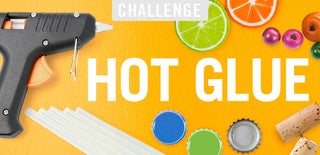Introduction: $78 Grow Light - Full-Spectrum, 22 Watts, No Heat
Growing plants indoors enables a level of precision not available outdoors. For this reason, it's well-suited to growing a wide variety of crops and making data driven decisions on yield, timeframes, energy consumption, etc. A current project involves producing food under a queen bed lofted five feet up (this creates 167 cubic feet of space). Inside of a grow tent, I’m first adding trays of produce. This requires sufficient quantity and quality of light for optimal production.
Most grow lights are very expensive, energy hogs, and emit an insane amount of heat. This heat requires more energy for intake and exhaust fans to keep an ideal ambient temperature for the plants. Although LED lights emit only 60 lumens per watt consumed, half of High Pressure Sodium lights at 120 lm/W, the low cost and long lifespan of LEDs make them much more efficient.
This DIY version consumes less than 22 watts of energy (half as much as a laptop) and can be run for less than $12/year*. The lights are barely warmer than ambient temperature, eliminating the need for massive input and output fans . This light uses easily accessible materials, takes about 15 minutes to build, is lightweight, durable, radiates practically no heat and is very inexpensive.
*22 Watts × 8765 hours (one year) = 193 kWh (kWh = W × hr / 1000). US Average Price of 12 cents/kilowatt-hour as of May, 2015. 193 kWh * $0.12 = $23.16/year. If you run the lights 12 hours/day, this is $11.58 annually or less than a dollar a month.
Step 1: Gather Materials
Hot glue, drill, metal snips, old extension cord - not included in price
Baking Pans - $1/each
E27 Socket (This is the most common size of sockets on the Edison Scale that runs from 4-40) - $1/each
Plug - used old extension cord Wiring - $0.25
Ikea Dioder - $20
***TaoTronics 3 Band LED Grow Light - $27/each.
Total Cost: $78.25
***430, 460, 630 and 660 are 4 peaks wavelength of growth spectrum for maximum ChlorophyII A and B production.
Blue 400~470 nanometers light is good for photosynthesis; and helps induce Chlorophyll and Carotenoid. Blue light is best for healthy leaves.
Red 610 ~ 720 nanometers light (660 nanometers is the peak wavelength) for photosynthesis and photoperiodism. Red light is best for blooming and fruits.
Step 2: Cut and Drill Holes in Both Baking Pans
Cut holes in two baking pans. The top pan should allow the bulb to pass all the way through up to the rim. The bottom pan should allow the bulb to rest on top while not blocking any of the lights from shining out.
Trace around the lights for the top pan. Place on top of bottom pan and trace another circle with a diameter a half inch shorter.
Drill holes that allow the cords to pass through to power the LED strips.
Step 3: Hot Glue!
Hot glue the top pan onto the bottom pan, sandwiching the bulbs in between.
Step 4: More Hot Glue!
Hot glue LED strips onto bottom of glued unit. Thread wires through the holes and connect power to led strips.
Step 5: Attach Wiring
If necessary, wire together the two lights in parallel and the power cord to either one.
Step 6: Grow!
I’ll have more data in the next instructable on which plants perform best when factoring yield, market price and maintenance. I’ll also show how to create an easy frame (just pvc and hot glue) for multiple lights and plants. Finally, I’ll be testing soil vs. hydroponics vs. aeroponics.
Please favorite above and comment below!

Participated in the
Hot Glue Challenge













